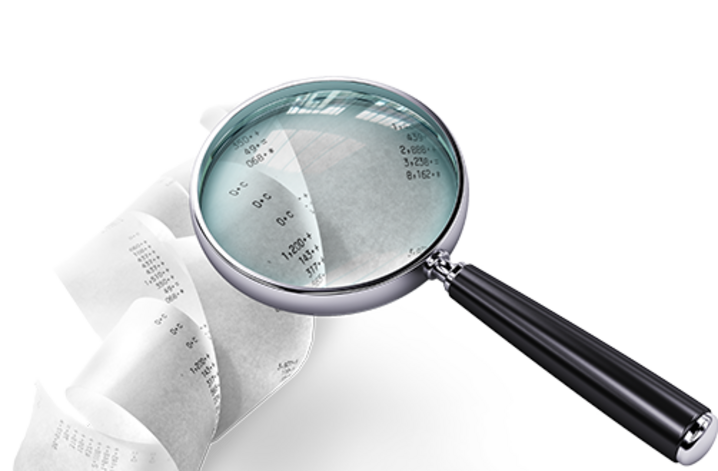A central principle of the FIORI interface is to make applications simpler and more user-friendly without overloading them with information - as is often the case in GUI transactions. Last but not least, this challenge is met with the help of graphical representations. Basically, the FIORI interface offers different types of applications, which are also used in FICO:
Transactional apps: Most of the operational work takes place in transactional apps. Transactional apps allow the user to perform an action in a simplified and clear view. With transactional apps you create, change, cancel or post your documents. Example: posting an invoice.
Analytical apps: With the help of analytical apps, the user can view certain KPIs. Example: evaluating sales data. Here, there are Overview Pages that provide an overview of a specific area - e.g. general ledger overview. Analytical apps also include multidimensional reports, which are a kind of pivot tables. With multidimensional reports, it is relatively easy and flexible to evaluate and analyze different data. In addition, many analytical apps are equipped with graphical elements for better presentation of the evaluated data.
Factsheets are a kind of dashboards or overviews with compiled information without much interaction, which are mainly used for management reporting.
SAP GUI for HTML is a web interface for GUI transactions. GUI for HTML originates from the early days of FIORI and replicates the GUI transactions into the FIORI environment. Although this option still works technically, it is not being developed further and will gradually be replaced. In best practices, this option is hardly present anymore. For this reason, we will not discuss this type of FIORI app further.
Most popular FIORI apps in FI/CO
General Ledger Overview is a popular analytical application. Its clarity and intuitive operation is probably the biggest contrast to the transactions in SAP GUI: where a separate transaction with a lot of information that is not always needed had to be called up for each evaluation, in FIORI the user sees an overview of the functions and data he needs in the form of cards. In addition, individual cards can be shown or hidden. So if you don't want to see the G/L account balance in the general ledger overview, simply hide the card. For this, no settings have to be made via configuration or a customer-specific development. The user has the possibility to make these settings in FIORI directly in the application with two clicks. A very practical option is the so-called Quick Links: List of applications to which it is possible to jump from the general ledger overview. In addition, each individual card offers a jump to a more detailed application.
Another analytical application that is structured in the form of a multidimensional report is the totals and balances list.
The totals and balances list is structured like a pivot table or pivot browser. The upper area of the application contains filter values such as ledger or company code. In this area, not only required filter values can be set, but the filters themselves - via the Customize Filter button. A whole range of other filters is available here, divided into groups "Simple", "G/L account", "Account assignment", "Partner fields" and "Public Sector Management fields".
In contrast to GUI, the display of the various balances is given on one level: from opening balance to debit balance and credit balance to closing balance.
Via the navigation area on the left side, parameters can be taken over for the evaluation, either as columns or as rows. Evaluations compiled in this way can be saved as default values. Another functionality is hidden behind the fields to be evaluated: Here, by clicking with the right mouse button, additional secondary attributes can be displayed and taken over: in our example, attributes such as "Reconciliation account", "Inventory account", "G/L account subtype" and a further total of 20 attributes. Another much-used advantage of multidimensional reports is the simple extraction of the report into Excel.
Another example of optimization in FIORI is the transactional app "Display Customer List".
Compared to the customer directory in SAP GUI, where the entire display did not fit on one screen, the solution in FIORI is much clearer and also more popular with customers.
By clicking on the customer number, a pop-up appears with further data of the customer, which can be expanded via "Further links". From this window, it is possible to jump directly to further processing of the displayed data, for example, to the posting of incoming payments. Once the payment has been posted, the arrow button can be used to jump back to the customer directory.
Another application type - the info sheets or object pages - provides overviews of objects in the SAP system, such as vendors, customers, profit centers, cost centers, and so on. They contain a master data overview as pure basic information, but also more detailed information such as analyses and customer payment behavior. Info pages have a purely informative character and can usually not be used interactively.
Summary
With FIORI, SAP brings an enormous relief to the everyday life of the users: Where information had to be gathered and reports had to be built up, an overview is given at the push of a button. What's more, FIORI applications can be configured individually - so each end user uses only the apps they need, and to the extent necessary for their work. FIORI is a strategic product of SAP. This means that the product will continue to be developed and new functions and applications will be delivered with each release.


